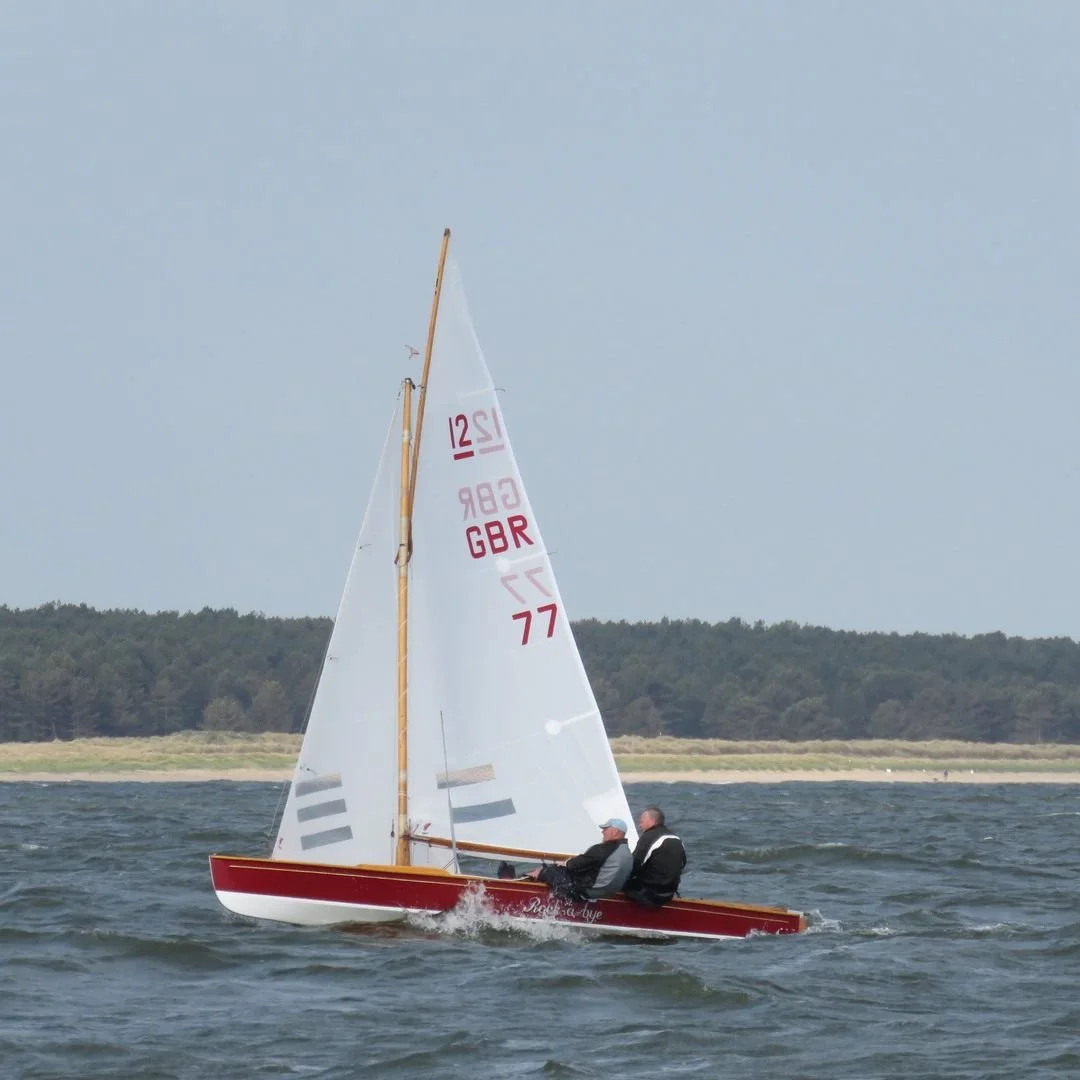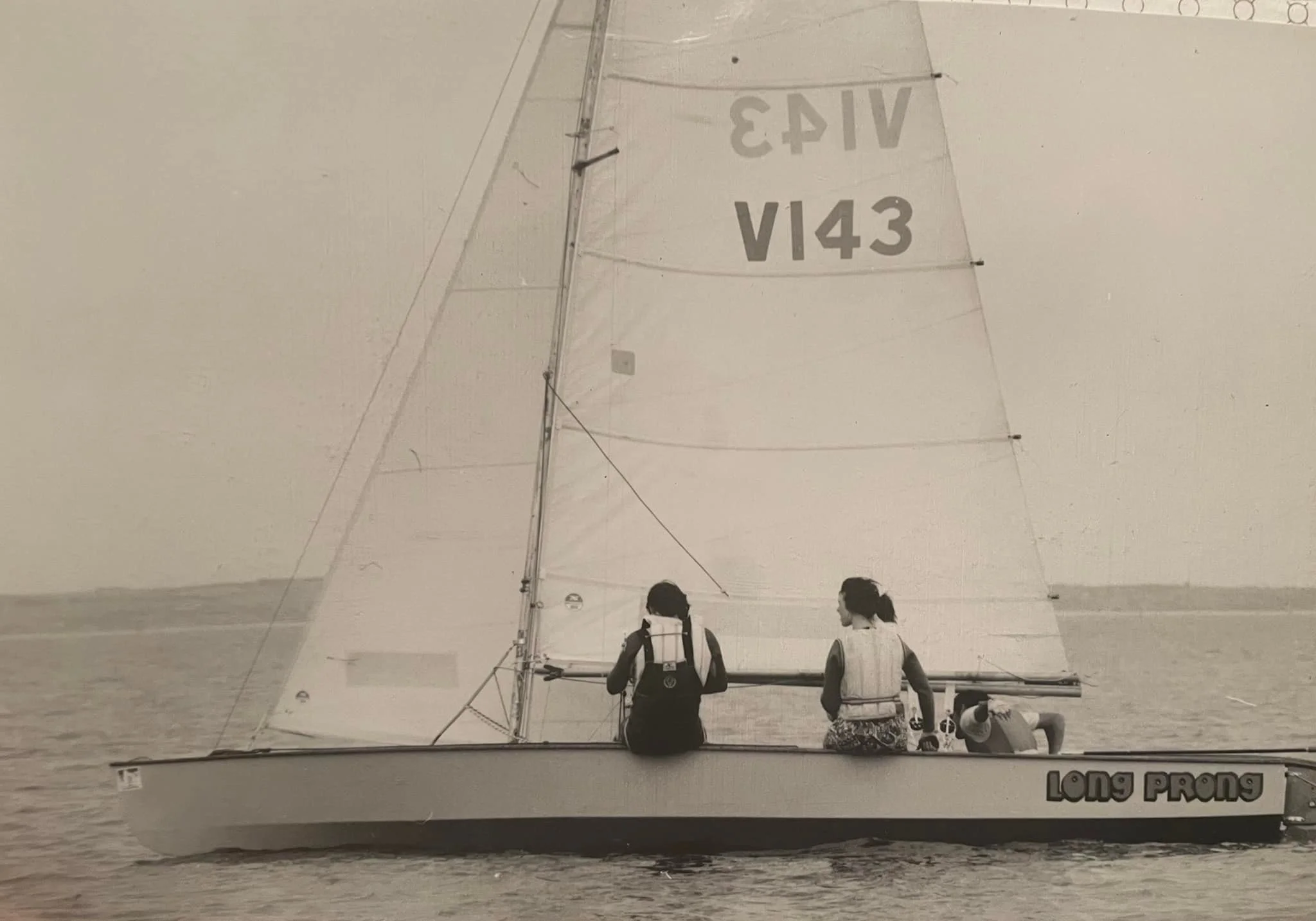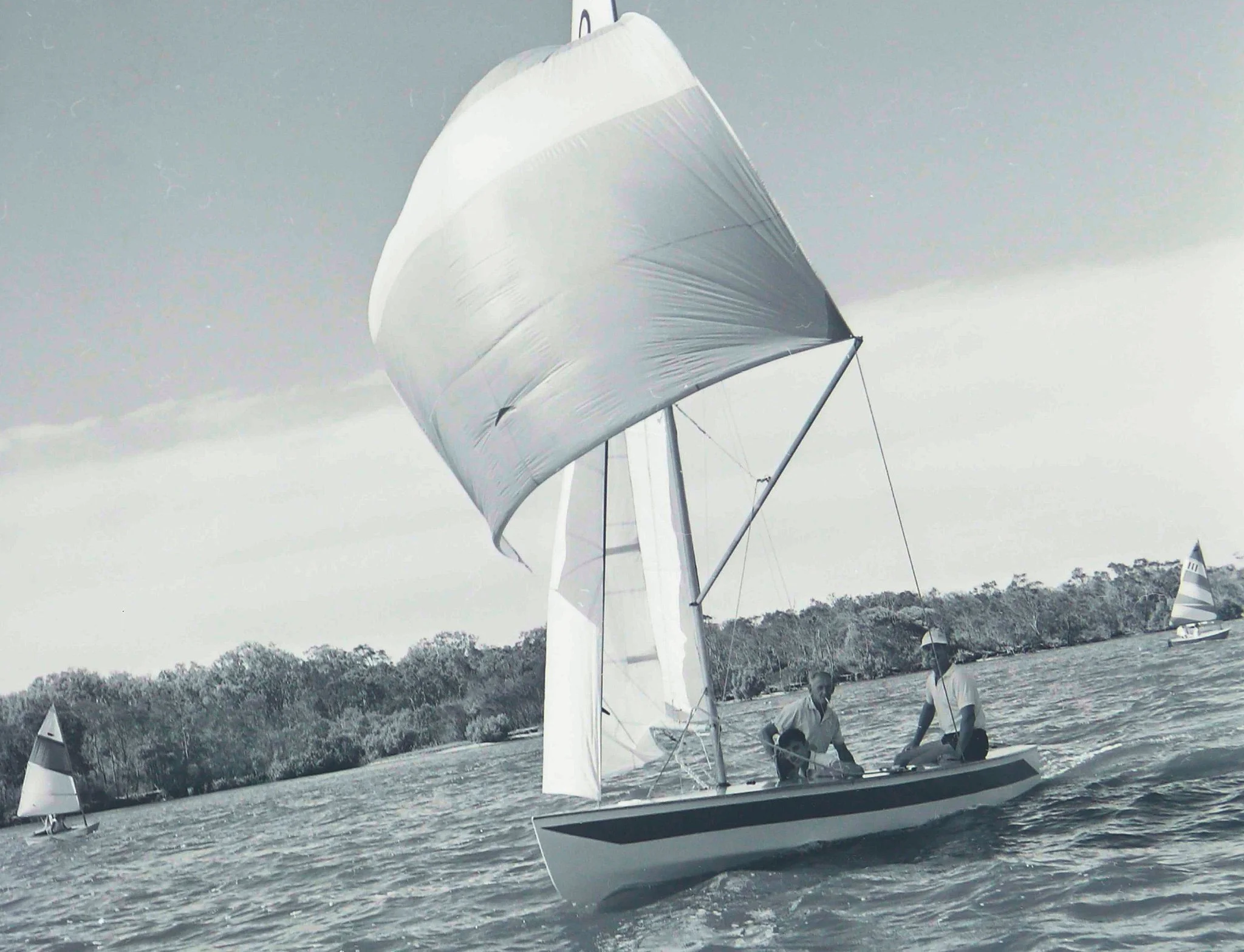From the Ground Up
“It’s not an arms race. You can sail affordably in a high end competition.”
SWS has done several stories about the Sharpie in Australia. This week watch ‘FROM THE GROUND UP’ and hear from those who are leading the resurgence and enthusiasm for the class.
Survival & Revival
There’s always been one-design, restricted and development classes. So how does a dinghy designed in Germany over 90 years ago maintain relevance and interest in Australia today. Much is answered by this film while SWS proposes a few ideas.
Old classes survive for several reasons. Nostalgia has played an important role in class survival and revival. Heavyweight Sharpie fleets still sail in the UK, Holland and Germany and several old Australian boats are fully restored and sailing again. See The Sharpie Story – Finding Sabre 30th June 2022 and The Sharpie Story – Saving Sabre 14 July 2022.
Some older classes have embraced contemporary construction and rig while keeping faith with original specifications for general shape, dimensions and sail area. The Kroger brothers 12 Sq metre Sharpie (1931) adapted to the Australian Sharpie, John Spencer’s Cherub (1951) and Jacks Holt’s International Cadet (1947) and Mirror Dinghy (1961) have followed this path and are still going strong. The Royal Yacht Club of Victoria is hosting the Cadet Nationals followed by the Worlds in December 2022. The UK and Euro Cadet titles finished 3 weeks ago in Torquay. There were 80 entries from seven nations for the Euro’s. The worlds in Williamstown later this year are hoping for similar numbers.
Australian Lightweight Sharpies. Screen shot ‘From the Ground Up’
The Ordinary Dinghy
Preference for an ordinary dinghy rather than a radical design dominates club sailing and dinghy sales. Once again, Chris Thompson’s What We’re sailing Today in his SailCraft Blog has done the analysis of dinghy numbers at important regattas over time in Europe, America and Australia.
Single-handers dominate club sailing around the world. With ‘over-stretched lifestyle’ you can hit the water after work and the crew doesn’t need to show up. Optimists and Lasers are the common pathway to the heavier Olympic Finn dinghy now sadly discarded for Paris 2024. There’s always other super singles making inroads in this market. There’s a foiling moth for extreme sailing but its the RS Aero that might challenge this space. Its a super lightweight traditional dinghy with 5, 7 or 9 Sq metre rig and adjusted handicaps to suit all ages and weights but the cost is AUD 15,000 on the water.
In Europe the double-handed dinghy conceived in the 1960’s with a symmetrical spinnaker and trapeze like the 420, 470 and Flying Dutchman, is still very popular. These ordinary dinghies with traditional rig and medium performance dominate club sailing in huge numbers. Continual development towards lighter, faster, foiling craft with asymmetrical rigs don’t pre-occupy the dinghy market. High-performance boats are not what families and weekend competitors really want. Around the world, most sailors have settled into Middle of the Road hiking dinghies with medium or even slow speed.
Perhaps dinghy sailing is like haute couture fashion or Formula One racing. Extreme designs and new materials are tested and good bits trickle down to clothes and cars us all ordinaries can buy from the shelf and showroom. Similarly, top sailors will do regattas in demanding and extreme classes wearing high performance tech gear, but return to club racing in conventional dinghies wearing cut-off jeans and a yellow slicker. They want the camaraderie of sailing with family and friends in a dinghy that still offers good performance. The Australian Lightweight Sharpie fits that requirement perfectly.
Heavyweight Sharpie. Wells Sailing Club Norfolk UK. June 2022
Up & Still About
The Australian Lightweight Sharpie is enjoying a resurgence as a high-performance club dinghy. It offers sailing affordability and often three generations of a family are devotees. Modern construction techniques are combined with sophisticated running rig while measurement remains constant. The latest moulds share near identical hull offsets with the original 12 Square Metre Heavyweight from 1931.
The gunter rig Sharpie was designed in Germany in the 1930’s and sailed by two hard-hiking crew. The first Australian Sharpie was built in 1934. Typical of antipodean sailors, we soon departed from the International Class Rules. Locals used light ply then added Bermuda rig, spinnaker and third crew on trapeze. The boat ‘quickly became the most widespread dinghy class in the southern states, where the conditions were often too rough for the skiff types that had dominated Australian dinghy sailing’ *
Naming Sharpie
When we were juniors, Sharpie crews were a tougher breed, reinforcing their image with awful boat names. LONG PRONG, PORK SWORD and The GOOD The BAD and The UGLY would not pass a pub test in the ladies lounge these days. LONG PRONG is redeemed by sometimes sailing with an ‘all gender’ crew. Sharpie sailors love old school traditions like a quick downwind frosty and fag seen here on the Maroochy River.
Say no more. Mordialloc 12 Sqm Sailing Club C1970’s
Downwind frosty and fag. Sharpie on the Maroochy River C1960’s
2023 Nationals
The 79th Australian Sharpie Nationals are in January 2023 at the Derwent Sailing Club in Hobart. 26 boats have already entered with expectation of 40+ by Christmas. In true Sharpie style, they’ve secured sponsorship from Tasmania’s Cascade brewery. We know a few classic champions who still like a frosty to settle nerves on the first beat.
The last National championship where both Heavyweight and Lightweight Sharpies competed together was Hobart 1962. There’s work being done to reprise a mixed race after the main regatta in 2023.
Here’s cheers to 90 years of the Australian Sharpie!
Credits
Black & White photos from Aust Classic Dinghy Network.
*Chris Thompson. SailCraft Blog




